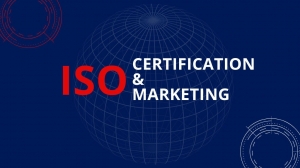Nearly two-thirds of employees say meeting overload steals time from real work, according to CNBC's 2019 survey report. The obstacle isn't talent; it's the lack of a shared vocabulary. A team-based personality assessment supplies that language, turning friction into curiosity and accelerating decisions.
This guide compares nine team-ready assessments, applies a three-step filter to help you choose, and hands you a rollout playbook you can use tomorrow. If spotting collective work patterns is your priority, TeamDynamics shows how your team operates today and recommends the next move.
Quick comparison: 9 leading team personality tools
Use this menu to scan what each assessment measures, where it fits best, and how much effort it asks from the team.
TeamDynamics

TeamDynamics is designed to highlight how a team works together - focusing on shared patterns and friction zones rather than just individual traits. The output includes a manager / team report with a facilitation guide and personalized recommendations. The assessment tends to be light: while the platform suggests budgeting up to 30 minutes for thoughtful responses, most users finish in 10–15 minutes. Pricing is handled via one-time per-user payments (not a recurring subscription) - e.g. $39 per user in the Pro plan.
MBTIonline

This product uses the classic Myers-Briggs dichotomies (E/I, S/N, T/F, J/P) to help teams see how preferences align or differ. It's often used by new or forming teams who want a foundation of shared understanding. The team receives a combined portal and reports (individual + team maps). The vendor states it takes about 45 minutes total in many cases, though teams often proceed at their own pace. Pricing is per participant: for example, $99.95 USD per person for the MBTIonline Teams package.
EverythingDiSC/ The Five Everything

These tools measure behavioral styles and trust/collaboration behaviors. They shine when a team wants to rapidly improve communication, trust, and conflict norms. The typical output includes a group wheel (style distribution) and a workshop kit (slides, facilitation guide). Completion time is moderate (15–20 minutes is realistic for many DiSC instruments). Pricing often involves a report fee + optional facilitation costs (many organizations engage a trained facilitator rather than DIY). (Note: I did not locate a definitive vendor time/pricing page during this check — treat this as typical industry practice.)
Hogan Team Report

The Hogan team aggregates data on shared derailers and leadership risk factors across team members. It's often used in senior leadership settings, where the team wants to diagnose collective weaknesses under stress. The team gets a detailed multi-page report, oftentimes 20–30 pages, with narrative and charts. The assessment itself may take ~15 minutes or so (depending on which Hogan instrument is used). Pricing is typically via bundled per-person packages or enterprise licenses. (I did not find a freely published “time to complete” from Hogan's site in the quick scan; confirm with the vendor.)
PredictiveIndex (PI)

PI measures dominant behavioral drives and motivational needs. It's often used in environments that combine hiring, team design, and performance — so teams using it often overlap with talent/HR workflows. The output is a dashboard/report that allows team leads to explore behavior mixes. The vendor claims the behavioral assessment takes about 6 minutes. Pricing is via SaaS subscription to access their platform and reporting features.
CliftonStrengths

CliftonStrengths identifies each person's top talent themes (often 5 out of 34). Teams use it for engagement, role alignment, and strengths mapping. The team output is a team strengths grid, showing overlap and divergence. The assessment takes about 30–45 minutes on many platforms. The pricing model is per-person (you purchase a code or report for each individual). (I did not locate a team-bundle promo page in my quick scan; it's widely used so multiple vendors vary it.)
Belbin Team Roles

Belbin assesses people's preferred contribution roles in a team (e.g., “Coordinator,” “Plant,” “Completer”). It's effective when you want to balance role coverage on project teams. The output is a team role summary, showing which roles are over/underrepresented. Many Belbin assessments can be completed in about 15 minutes. Pricing is via a report fee per person, and often facilitator guidance is recommended. (I did not verify exact duration or published pricing in this scan.)
Insights Discovery

Insights Discovery uses a colour-energy / communication style model, measuring how people prefer to communicate and relate. It's often used for fast conflict reduction and communication calibration (e.g. understanding why two people misinterpret tones). The output includes a colour wheel poster/slides and possibly summary materials. The assessment often takes ~20 minutes. Pricing is usually per person plus workshop fees when delivered as a facilitated program (vendor contact needed for details). (I did not find a specific published price in this scan.)
VIA Character Strengths

VIA focuses on character values and engagement strengths (e.g., gratitude, curiosity, kindness). It's helpful in boosting team morale, well-being, and engagement. The output for teams is a team strengths heat map or aggregated chart of top character strengths across the group. The core VIA survey is relatively quick (10+ minutes in many cases). Pricing includes a free basic version, and a paid “Pro” version with richer reports or team aggregation features. (Vendor's site confirms free baseline and paid upgrade options.)
How to choose (3 quick filters)

Comparing features is only step one; the win comes from matching the tool to your situation. Use these three filters:
- Start with the outcome. What problem—communication gaps, role imbalance, stalled engagement—are you solving?
- Match delivery and budget. Decide between self-serve portals and facilitator-led programs before money or calendars lock you in.
- Pick a format your team will use. Simple colour codes land faster with busy squads, while deeper psychometrics suit leadership teams.
Work through them in order and the right assessment usually shows up.
1) Start with the outcome
Teams lose almost a full workday each week, about 7.5 hours, to miscommunication, according to a 2022 Harris Poll for Grammarly. So begin by naming the specific pain you want to remove:
- Fuzzy communication? Pick a language builder such as Everything DiSC or Insights Discovery to give stand-ups a shared vocabulary.
- Project slippage from missing detail lovers? Belbin highlights the “Completer–Finisher” role so you can rebalance work.
- Low energy or morale? CliftonStrengths or VIA focus attention on what each person does best, raising engagement.
- Leadership derailers? Hogan or Predictive Index quantify risk factors that can stall execution.
- Need a full team pattern map? TeamDynamics reveals collective habits and suggests next steps.
Clarifying the outcome first trims budget waste, shortens rollout time, and lets you prove ROI within a quarter.
2) Match delivery & budget
First, decide how much money and calendar space you're willing to spend.
- Self-serve portals such as MBTIonline Teams (about $100 per person) or TeamDynamics (flat team subscription) let you complete the survey and review insights in under an hour. For a broader look at team dynamics assessment tools, this guide compares key options and shows how to match each one to your goals.
- Facilitator-led programs bundle certified experts. Expect roughly $175 per person for a Hogan team workshop or around $5,000 for a half-day session that includes coaching. DiSC and Belbin workshops land in a similar price band plus report fees.
Calendar cost matters, too. A portal debrief can fit in a 60-minute retro, while a full workshop usually takes half a day or more.
Whichever route you choose, agree on one or two success metrics before purchase; the metric, not the invoice, should drive the post-assessment conversation.
3) Pick a format your team will use
Completion drops fast when a tool feels like homework: micro-learning studies show 80 percent completion for bite-size modules versus 20 percent for longer formats. The same principle applies here.
- Visual, low-lift formats. Teams that like quick cues gravitate to colour-coded Insights Discovery or the four-quadrant map in Everything DiSC, easy to absorb in a single stand-up.
- Data-rich formats. Analytics-minded groups often prefer deeper psychometrics such as Hogan or Predictive Index, which offer multi-page risk and driver data they can explore between sprints.
Context matters, too. Remote or hybrid squads benefit from portals they can revisit after each release, whereas an in-person workshop may suit a co-located product team.
Match the format to everyday reality and an “interesting quiz” turns into a shared operating rhythm.
How to roll out your chosen assessment in 5 steps
1) Set goals & guardrails
Teams with written, time-bound goals are 25 percent more effective, according to a 2025 Gitnix analysis of 400 organizations. Begin by defining one success metric you can measure eight weeks out: stand-ups end on time, handoffs close faster, or defect counts drop.
Anchor the exercise as developmental, not evaluative. Participation is voluntary, sharing is opt-in, and promotions stay separate from any colour wheel. Stating these guardrails early boosts psychological safety, a key predictor of team performance.
Decide how you'll track progress. A two-question pulse survey or a simple red-amber-green check at sprint retros shows whether the tool worked and lets you adjust before momentum fades.
2) Admin & logistics
Clear, time-boxed requests boost action. A 2021 Economic Inquiry study found that tasks with a one-week deadline were completed more than twice as often as those given a month or longer. When you email the assessment link, explain the “why,” note that it takes 20 minutes or less, and ask teammates to finish “before Friday's stand-up.”
For facilitator-led tools, confirm the workshop date before the survey goes out; reports sitting idle lose momentum, and calendar clashes get harder to resolve. Send a brief prep sheet so everyone knows whether to print PDFs, bring a laptop, or simply show up ready to talk.
Budget the calendar as well as the fee. Self-serve surveys usually take 6–30 minutes; facilitated workshops run half-day to full-day once debriefs and team-building exercises are added. Share those estimates upfront so people can block the time and avoid last-minute conflicts.
3) Team debrief
Hold the debrief while details are fresh, ideally within 24–72 hours of completing the survey or workshop. Most teams get what they need in 30–60 minutes, so block an hour and stick to it.
- Walk the report together. Reconstruct the story before you jump to fixes: where dots cluster, which gaps stand out, what patterns repeat?
- Let reactions surface. Encourage quick pauses for questions or pushback; disagreement often signals a valuable blind spot. Capture themes on a shared doc or whiteboard—strengths to amplify, friction to smooth, and missing styles.
- Agree on one or two new norms. Example: the most talkative voice speaks last in stand-ups, or a detail-oriented teammate owns QA for the next sprint.
Close by confirming owners and check-in dates so ideas don't stall once people leave the room.
4) Turn insights into 2–3 experiments
Keep the loop tight. Software projects that release in cycles of two weeks or less succeed 200 percent more often than traditional methods, according to Standish Group research cited in 2024. Apply the same cadence here:
- Write a one-sentence hypothesis. Example: “Pairing opposite profiles on risk-heavy stories will cut defects by 20 percent this sprint.”
- Run the test for one or two iterations. Ideas:
- Pair a detail-oriented teammate with a big-picture thinker on the next high-risk user story.
- Rotate a dedicated QA owner each sprint.
- Add a “pause-and-paraphrase” rule: every speaker recaps the previous point before adding their own.
- Track the metric daily. Defect count, stand-up length, or story throughput all work; pick one that matches the hypothesis.
Log wins and misses in a shared doc. By week six you'll know whether to adopt the new norm, tweak it, or drop it, and the team owns the decision instead of receiving a top-down directive.
5) Follow-up & scale
Revisit your metric at week six. About 80 percent of behavior-change initiatives plateau if they're not reinforced, according to a 2023 Boston Consulting Group review. Ask the only question that matters: Are we better? A two-question pulse survey or meeting-length data usually answers fast. Keep the norms that improved the metric, and drop the rest.
If momentum is strong, invite one adjacent team into the next cycle. Share your playbook—not just the results—so they copy the process, not a one-off tactic. Expanding gradually keeps quality high and lets each group tailor experiments to its own pace.
Privacy mini-checklist
- Explain the assessment's purpose up front; participation and sharing remain voluntary.
- Store data only in the vendor portal and limit access to those who need it.
- Delete profiles when a teammate exits, following your retention policy.
- Use results for hiring or performance decisions only if the tool is validated for that purpose.
Handled well, clear privacy rules build trust and open the door for broader adoption.
Conclusion
A ten-person product squad at a mid-size SaaS company faced familiar pains: stand-ups stretched past 20 minutes, QA defects crept into releases, and designers felt over-ruled in quick decisions.
On a Tuesday afternoon the team spent 15 minutes completing the TeamDynamics assessment. The report showed a strong bias toward fast, decisive styles and a shortage of detail-oriented energy: plenty of starters, not enough finishers.
They ran three small experiments:
- Rotating QA owner. Each sprint had a designated “dot-the-i's” champion.
- Speak-last rule. The most talkative voices waited until the end of discussions, giving quieter teammates room to flag edge cases.
- Mixed-profile pairing. Big-picture thinkers were paired with process lovers on the highest-risk stories.
Sixty days later a pulse survey told the story: stand-ups averaged 15 minutes (-25 percent), acceptance-criteria misses fell by half, and meeting-satisfaction scores rose from 6.2 to 8.1 out of 10. It was the same people and the same deadlines, now guided by shared insight and a few targeted norms.
Frequently Asked Questions:
Which tool is best for team building? Start with the problem you're solving.
- Communication chaos → EverythingDiSC or Insights Discovery for a shared vocabulary.
- Role imbalance → Belbin surfaces who plans and who finishes.
- Engagement lift → CliftonStrengths or VIA spotlights top talents.
- Team-pattern analysis → TeamDynamics maps collective habits.
- Leadership-risk signals → Hogan or Predictive Index quantify derailers.
Can we run this without a facilitator? Yes. MBTIonline Teams, TeamDynamics, and VIA are built for self-serve use. DiSC, Belbin, Insights, and Hogan usually deliver more value with a certified practitioner who can interpret the data objectively.
How long does each survey take? Predictive Index averages about six minutes, Everything DiSC 15–20 minutes, and CliftonStrengths 30–45 minutes for the full profile. Most others fall between 10 and 25 minutes.
How often should we revisit results? Treat profiles as a map, not a tattoo. Re-run or refresh annually, or sooner if the team, strategy, or pressure changes.
Will this replace candid feedback? No assessment can do that. The profile jump-starts the conversation; growth still depends on teammates giving timely, specific feedback day to day.






